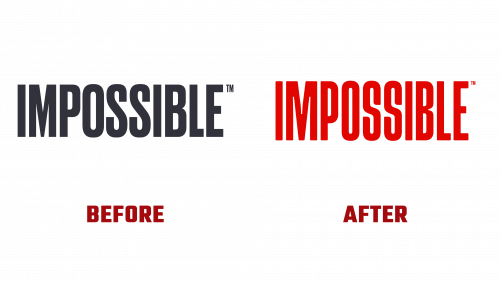Impossible Foods, a leader in plant-based meat since 2011, has unveiled a new brand identity created by Jones Knowles Ritchie and their internal marketing and creative teams. The updated branding represents a shift from its previous design, aiming to better align with the company’s environmental and health missions.
The redesigned logo moves from the earlier mint green and blue color scheme, which resembled scientific packaging, to a more vibrant and food-oriented red. This new red logo looks softer and more inviting, partly due to rounded corners and subtle ink traps in the letters “M” and “B.” These adjustments give the logo a warmer, more appealing feel.
A key update in the logo is the color change to a rich red, which taps into color psychology linking red to hunger and appetite. This choice aims to make the products more appealing by highlighting their tastiness.
One innovative feature of the new logo is transforming the letter “S” into a three-prong meat fork icon. This clever design element bridges traditional meat dishes and Impossible Foods’ plant-based alternatives. Although integrating this feature requires altering the logo slightly, it adds a playful and interactive dimension to the brand’s visual identity.
The new branding includes a robust red color palette, varying from light to dark shades, which creates a strong visual impact and ties back to food themes. Occasional uses of secondary colors like yellow, blue, and green support the main red theme without overpowering it.
The brand’s new typography draws from fonts like OH no’s Obviously and Degular, which are known for their boldness and subtle flares. This typeface is used in various widths and styles across marketing materials, mimicking the unique signs found in family-owned grocery stores, which adds a modern yet nostalgic feel to the branding.
With this rebranding, Impossible Foods updates its visual appeal and strengthens its position in the competitive plant-based food market. The new identity is designed to attract a wider audience by blending modern and traditional elements, staying true to the brand’s mission of offering sustainable and tasty meat alternatives.





